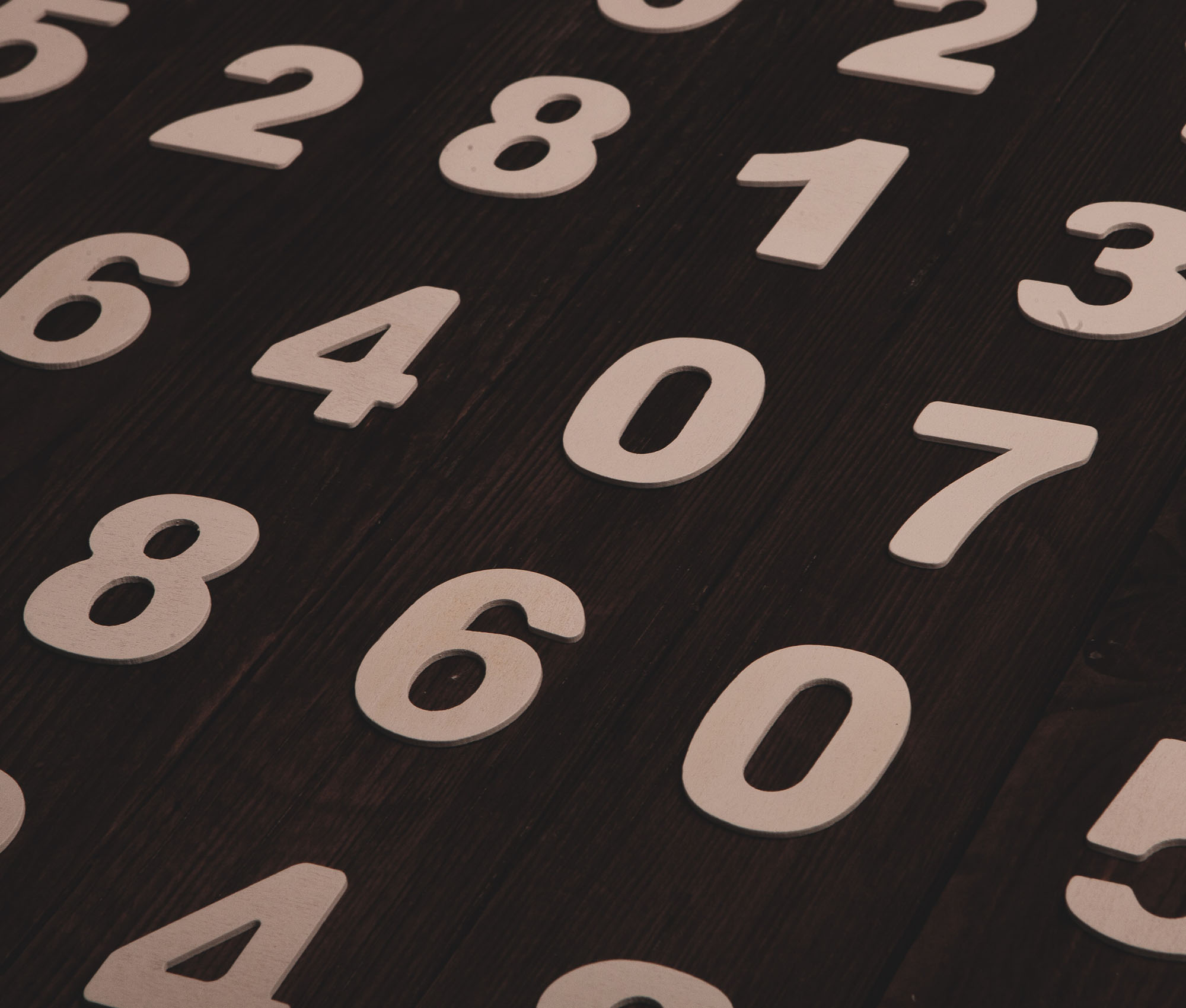Why is it called the Gauss Jordan method?
Already at an early age, there were no doubts that Carl Friedrich Gauss had a talent for mathematics. There are several well-known anecdotes from his childhood indicating his genius.
At the age of only three, Gauss apparently corrected an error in a financial calculation that his father was working on, purely by mental arithmetic.
In what is probably the most famous story, now seven years old Gauss had misbehaved in school. His teacher responded by giving him the intentionally time consuming task of adding up all numbers from 1 to 100 as a punishment.

The teacher was chocked as Gauss presented the correct answer within seconds. It didn't take him any longer to realize that the sum could be computed as:
He solved this by adding the rows pairwise:
Gauss's mathematical gift was apparently not passed on to his kids, at least not to the same extent. As a father of six, Gauss forbid them to pursue careers within mathematics or science, fearing that they might "lower the family name".
Why does Gauss Jordan work?
Imagine that you are given a pair of lines and you want to determine at what point the lines intersect.
If one of the lines were vertical, you could easily read off the x-coordinate of the point where the line crosses the x-axis. In a similar manner, a horizontal line would give you the point's y-coordinate.
In the case that none of the points run vertically nor horizontally, what you could do then is rotate the lines about the point of intersection.
In essence, Gauss-Jordan manipulates a set of equations in a similar fashion, allowing us to easily read their solutions.
How is Gaussian eliminationn used?
A set of linear equations form a system, which can be represented by an augmented matrix with each row corresponding to one of the equations. By using the three elementary row operations:
Interchanging two rows
Multiplying a row by a non-zero scalar
Adding or subtracting the scalar multiple of one row to another row
We can then eliminate variables from the equations until the solution becomes trivial. This state is reached when the system is in what's called reduced row-echelon form.
Gauss-Jordan elimination transforms a matrix into this state, making the solution to the system it describes available with minimal effort.
What is an augmented matrix?
Before reviewing the Gaussian-Jordan method, it is practical to first understand the transition from the system of equations to the augmented matrix. In short, the augmented matrix is just a way of writing the same thing as with the system of equations. We start with an example with two variables:
A brief explanation of the above: In step one, we convert the expression to matrix multiplication in the form , which we can use in step two to write the system of equations as an augmented matrix:
where the elements to the left of the vertical bar correspond to the constants of the variables in the left term, and the elements to the right correspond to the constants to the right of the equals sign. In the case where the right term is the 0-vector, we simplify the augmented matrix to contain only the left term, e.g.:
What is reduced row echelon form?
Examples of matrices in row echelon form are:
A matrix is is in row echelon form if:
all rows consisting of only zeros are placed at the bottom
each line has a leading element, of which all elements directly to the left are 0
each row's leading element always appears to the left of the below row's leading element
Examples of matrices in reduced row echelon form are:
A matrix is in reduced row echelon form if:
is in row echelon form
the leading element in each non-zero row is a one (these are called leading ones)
each column with a leading one has the value 0 in the elements below them
The ones in bold are called leading ones and all have in common that all the elements to their left, if there are any, are 0.
How to perform elementary row operations?
Introduction
The cornerstone of the Gauss-Jordan method is elementary row operations. Briefly, it is used to solve a linear system of equations by using the three allowed operations and applying them to the system of equations.
Change the places of two rows
Multiply a row by non-zero constant
Add a multiple of a row with another
We show these three operations on the following systems, which we first turn into an augmented matrix:
Change the places of two rows
The first equation is noted , the second is and so on. If and are written in their respective places, it means that these two lines will change places.
Multiply a row by a non-zero constant
The notation means that we multiply the first line by two.
Add one multiple of a row with another
The notation means the row operation "first row equation summed with the second row, which is multiplied by -2".
Why row operations work
Students often take for granted that row operations are legal, but find it difficult to give a convincing explanation as to why. Remember that row operations manipulate the system, but the solution set remains the same.
For practical reasoning, we can start from the simplest of equations:
The equals sign in an equation refers to a balance between left and right. This means that an operation using the four arithmetic methods (addition, subtraction, multiplication and division) on one term requires the corresponding operations on the other terms to honor the balance. We show a multiplication by 2:
Now we extend the analogy. Since both and have the same solution, and are thus balanced, it follows the same logic to add to the left side as to add to the right side:
If we take the exact same example over to a linear system of equations with a solution of , we get:
This is not a mathematical proof of row operations, but a fully valid reasoning that justifies the procedure. And remember - the solution set remains the same, though the system will be different.
How to solve a system of linear equations using Gauss Jordan?
To solve a system of equations is to determine its solution set. The goal of Gauss-Jordan's method is to solve a linear system of equations with the help of elementary row operations to simplify the system such that we can easily read what the solution is. Let us take the following system as an example:
First, we write the augmented matrix for the system, and from there we can find the reduced augmented matrix, which is also called the reduced row echelon form.
From the last augmented matrix we can read that:
Now we show how to reach the right augmented matrix with the help of row operations, step by step.
Now we are done and can see that there is a unique solution, namely the point . The important thing to understand is that with the Gaussian-Jordan method, the solution set is maintained despite the row operations, but the equations in the system are changed and are not the same. See the obvious example that the first-line equation from the first stage does not correspond to that from the last stage in the Gaussian-Jordan method:
The three solution cases
Remember that for all systems of equations, one of the three different cases applies; unique solution, infinitely many solutions or no solution.
Unique solution
In the previous example, we saw a reduced augmented matrix for a unique solution, a point:
No solutions
In the case of no solutions, i.e. the system is inconsistent, a contradiction has arisen under the Gaussian-Jordan method. If you do not see it directly, it will be discovered in the end by the fact that for one line, the entire left side will be 0 while the right side is non-zero, for example;
This means that the last line of equations is;
which is obviously false and thus the whole system lacks solutions.
Infinitely many solutions
The last case, infinitely many solutions, always means that we have either started with fewer equations than we have variables, or that a complete zero line has arisen:
In the case above, this means that we have two equations left, while the third has been reduced away in the row reduction. What we are doing now is introducing a parameter for line 3:
and continuing with the row operations:
The solution therefore follows the parametric form:
which we know as the parametric form of a line, as it has both a point and a direction .
Should we get two zero rows:
We introduce two parameters and continue to row reduce:
of which the solution also follows a parametric form:
We recognize the solution set to be a plane, as it has two parameters and thus two direction vectors. Remember the rule: two directions = two dimensions = one plane.


